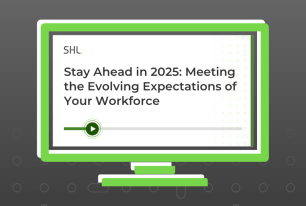5 Common Types of Microaggressions in the Workplace
Learn what microaggressions in the workplace look like and how we can avoid them in our journey to a more inclusive organization.
Share
As organizations are now taking steps in building a more diverse and inclusive environment, one of the biggest challenges is eliminating microaggressions in the workplace. Microaggressions involve subtle comments and actions, whether intentional or unintentional, that contain prejudice, and are often targeted against underrepresented groups.
The impact of microaggressions can be detrimental to the individuals on the receiving end. Therefore, it is important to recognize what behaviors are included in microaggressions and how we can avoid them.
First, let’s take a look at what microaggressions look like.
Examples of microaggressions at work
- Non-western names
Non-western names are often perceived as hard to pronounce. There are many cases where people with non-western names are advised to get another similar-sounding name or even worse, they are given nicknames. Personally, I have been called chow mein and chop suey. I understand that due to linguistic differences, it can be difficult to pronounce foreign names. However, names are a part of our identities, and everyone should be called with a name that they want people to call them. Rather than suggesting others get a westernized name or giving them a nickname, ask them directly how to pronounce their names, even if it is not easy for you to pronounce. - Mocking accent
Putting up a mock accent is another example. There have been times in my career when someone imitated an Asian accent while I was speaking. Mocking an accent can be incredibly hurtful and can make a person feel unaccepted and small. - Ignoring others
This nonverbal action may seem trivial but is hurtful to others. A good friend of mine works as a manager in the IT sector—a predominantly male-oriented industry. She often experiences no to little response when she pitches an idea in a meeting. However, when her idea is restated by a man in the group, it is met with a flood of positive responses. This gesture actually has a deeper meaning than it looks —it makes others think they are not valued or appreciated because of who they are. Engage with others and be inclusive in any interactions. Every person’s voice matters, and we all should value each other indiscriminately. - Prejudice
Assuming that black hair is not professional or expecting people of color to be the cleaners of the office are some of just the many examples of prejudice. Unfortunately, it is still very common to find this type of microaggressions in the workplace, whether it is done overtly (e.g. saying “Do your people celebrate Christmas?”) or implicitly (e.g. putting down your dirty glasses next to your colleague of ethnic background who is cleaning his or her own glass). - Insensitive comments
Asking “Where are you really from?” to a person of color is another common type of microaggression. It may make people feel they do not belong. Another comment that is also often heard is “You speak our language well.”. Depending on the context, this comment can also be categorized as a microaggression, as the underlying assumption behind this comment is that the person of color does not have full command of his or her language.
Microaggressions involve subtle comments and actions, whether intentionally or unintentionally, that contain prejudice, and are often targeted against marginalized groups.
How to avoid microaggressions in the workplace
Racism and discrimination are difficult issues to tackle as most people find it uncomfortable to talk about them. However, they are such an important topic to discuss if we want to create a harmonious workplace for everyone. Therefore, it is important to:
- Speak up
When you experience a microaggression, speak up. Tell the person that his or her behavior is not okay. And as a manager, if you hear your staff raise a microaggression flag, do not brush their feeling aside and tell them that it is just a harmless joke—take the matter seriously. Only when we build a culture of speaking up and listening to others, we can move one step forward in our journey to a more inclusive future. - Educate ourselves
Education is key in the efforts of eliminating microaggressions. Be open to new ideas, culture, and social interactions. Create a closer connection to members of different groups within the organization so everyone can understand each other better and increase the level of respect.
In our efforts to reduce microaggressions in the workplace, it is important to be aware, honest, and empathetic before we say and do things. If you are not sure your comments or actions may have made others feel uncomfortable, ask them directly and apologize if you unintentionally hurt someone. We are all human and we make mistakes. The most important is we acknowledge our unconscious biases and actions and are willing to change for the better. Finally, let’s openly discuss racism and discrimination issues without getting defensive and be open to learning.
Check out our other blogs on diversity and inclusion.









